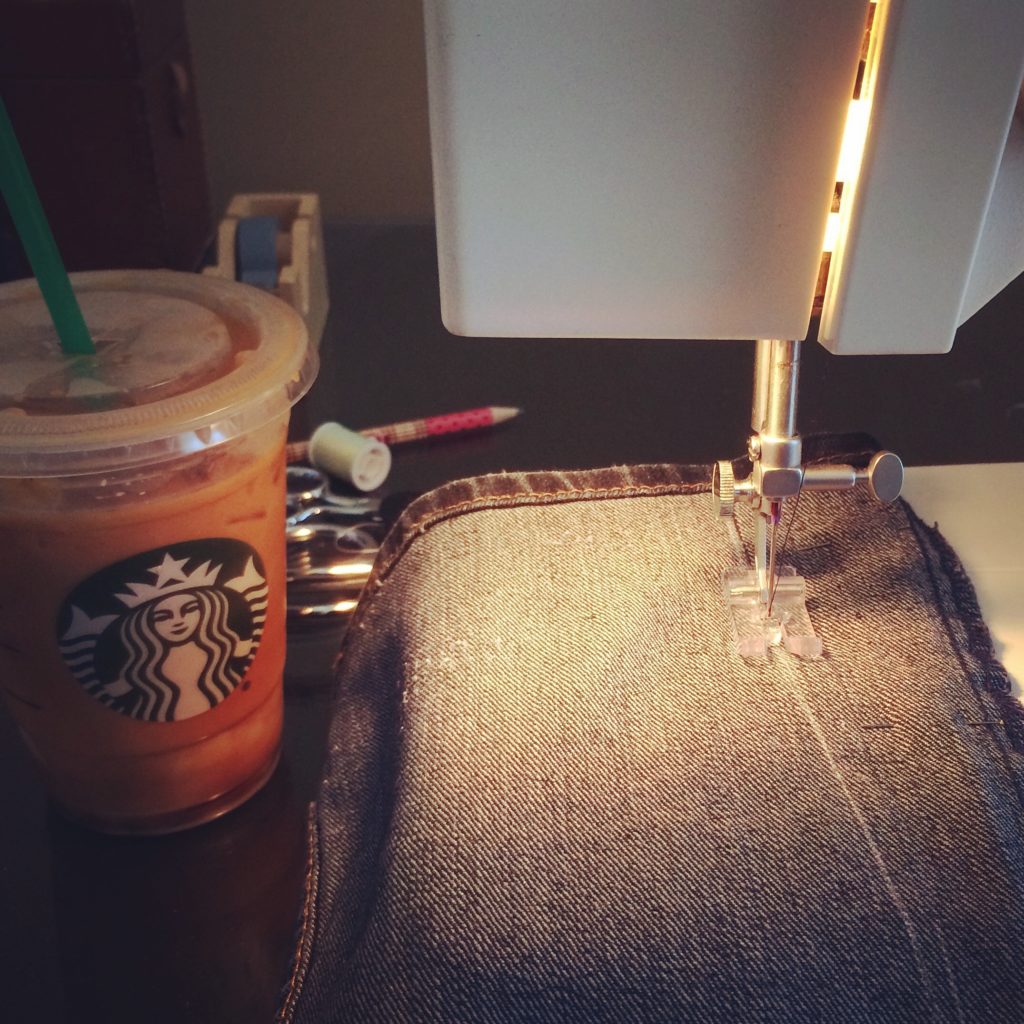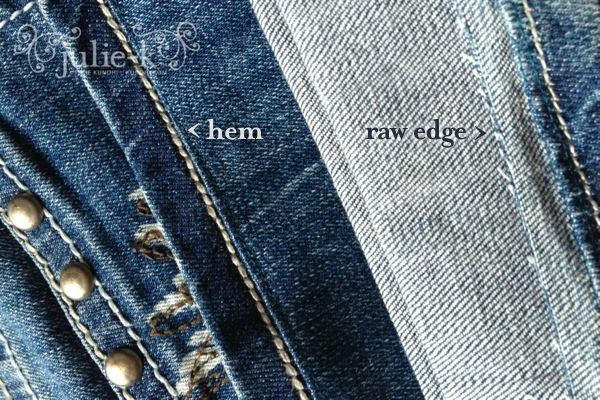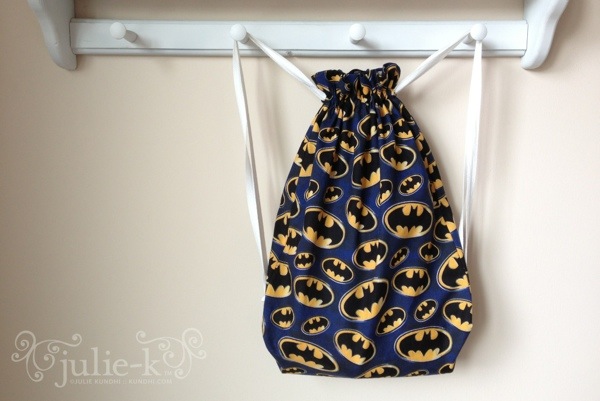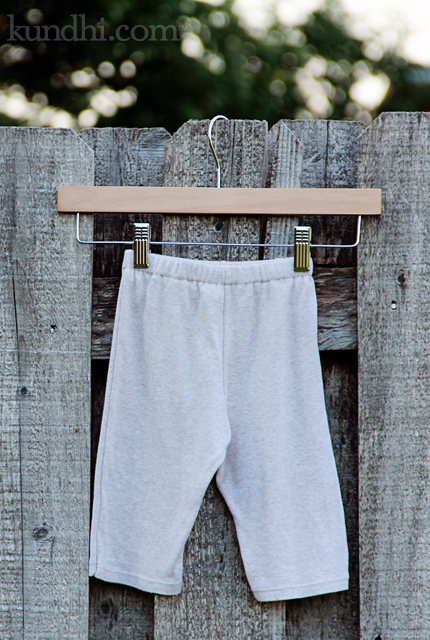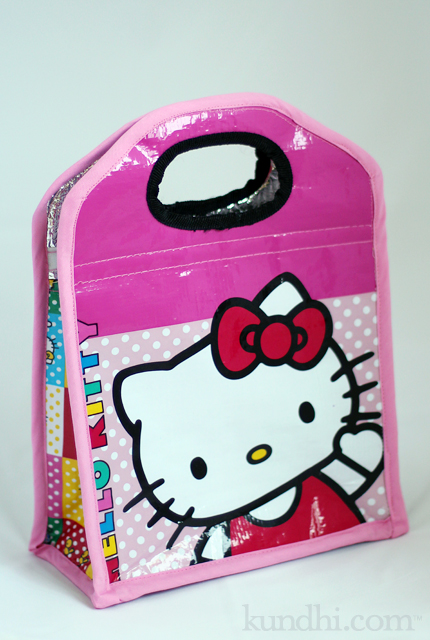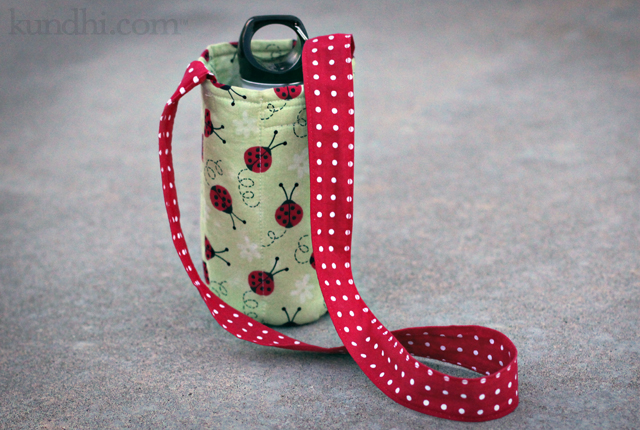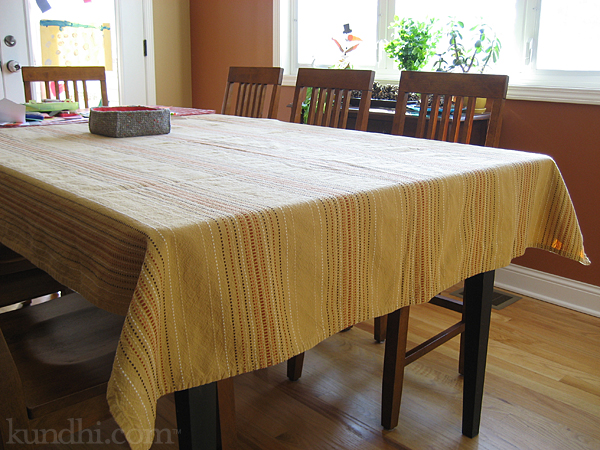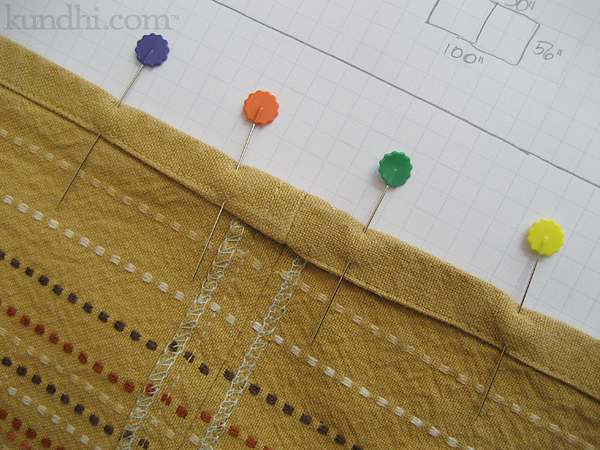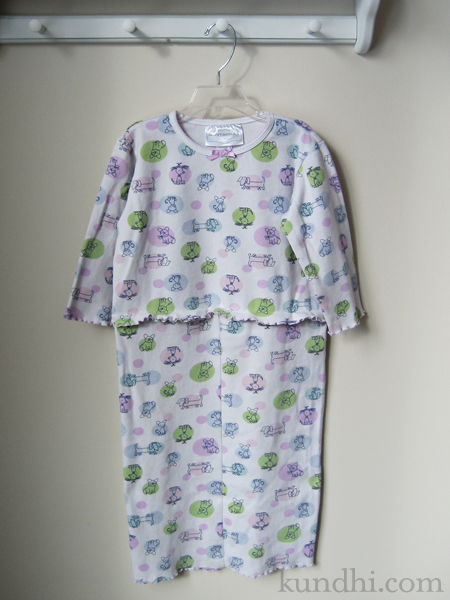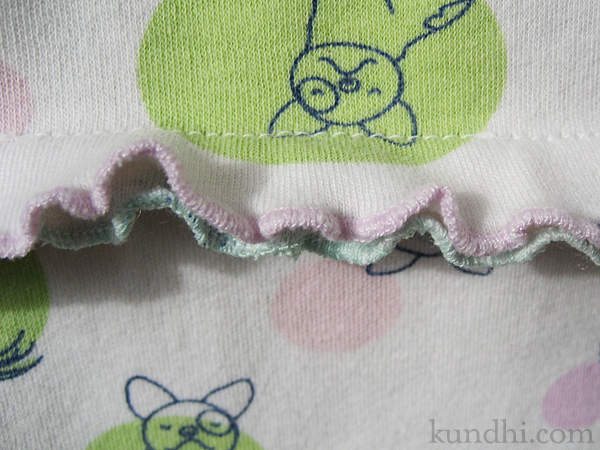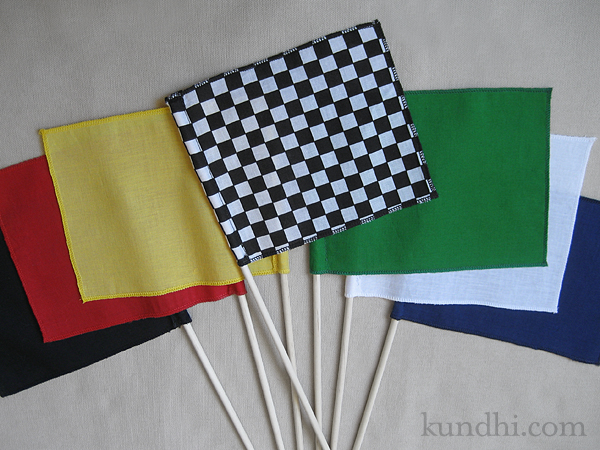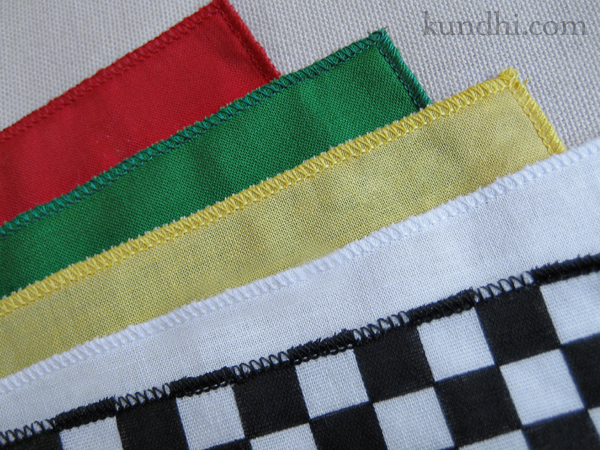You know what’s weird about skinny jeans? They never look too short. There are long and ankle length. When they really get short, they become capris. You just can’t go wrong. This is good when your daughter is growing like a weed, but only up and not out.
Temps are getting cooler, so we went through her stash of jeans this weekend. The 10s were a wee bit too short, but fit fine in the waist. The 12s were also a wee bit short, and were way too big in the waist. I decided to do the only logical thing: turn the 10s into skinny jeans.
Ironically, she has a really nice, brand new pair that she hates. They have a decorative seam down the top center that “feels weird.” They look so great on that I refuse to let them go. I’m convinced she’ll come to love them. In the meantime, they became the perfect pattern for refashioning four other pairs.
It’s really amazing to see a pair of pants transformed from something that looks like they’re ready for a flood to something cute and trendy. She was particularly happy that I gave new life to her sparkly Jordaches. (I got my first pair of Jordache jeans when I was just a little bit older than she is now. I LOVED them.)
So today was a good day. I watched football, had a Starbucks, and sewed up a storm. Hello, Fall. We’re ready for you!
